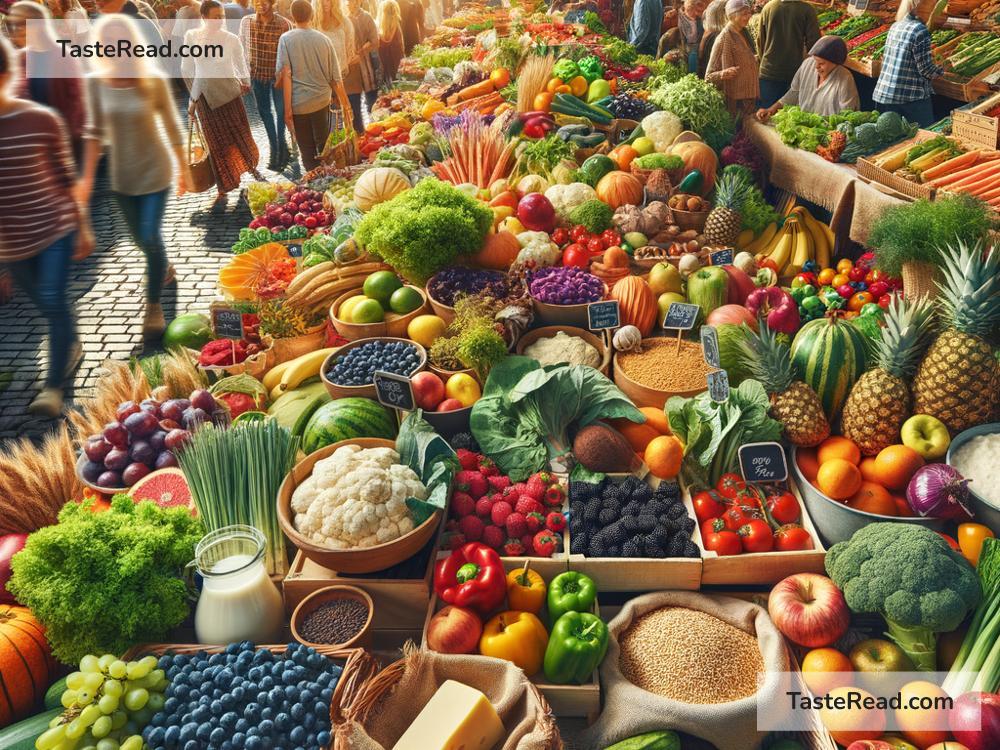The Impact of Food Accessibility on Nutrition
Food is an essential part of our lives. It gives us the energy and nutrients our bodies need to grow, stay healthy, and function every day. But not everyone has equal access to nutritious food. Food accessibility refers to how easy or hard it is for people to get the food they need. In many parts of the world, challenges like poverty, location, and food prices affect whether people can eat healthy meals. Let’s explore how food accessibility influences nutrition and how we can work toward a fairer food system.
What Is Food Accessibility?
Food accessibility means having physical, economic, and social access to enough food to meet nutritional needs. This doesn’t just mean having access to any food; it means having access to the right kinds of food, like fruits, vegetables, protein-rich foods, and whole grains. For people to maintain a healthy diet, all these elements need to be affordable, available, and convenient.
Unfortunately, in many communities, people face serious obstacles in accessing nutritious food. For instance, rural areas may have fewer grocery stores, making it harder for residents to shop for fresh produce. Similarly, low-income families may struggle to buy healthy food if it’s more expensive than processed options. These barriers can have serious effects on nutrition and health.
How Food Accessibility Affects Nutrition
Hunger and Malnutrition
When people can’t access enough nutritious food, they often suffer from hunger and malnutrition. Malnutrition happens when a person doesn’t get the right amount of vitamins, minerals, and nutrients needed for good health. For example, children who don’t eat a balanced diet may experience growth problems or stunted development. Adults who lack proper nutrition may feel fatigued, have weaker immune systems, or develop chronic illnesses.
Hunger and malnutrition are common in areas where food deserts exist. Food deserts are neighborhoods where healthy, fresh food is unavailable or far away. In these places, people rely on fast food or convenience store snacks, which are often high in sugar, salt, and unhealthy fats, but offer little nutritional value.
Obesity and Poor Diet Patterns
Interestingly, limited accessibility to healthy food doesn’t just lead to undernutrition—it can also lead to obesity. How? When people can’t afford fresh, nutrient-rich food, they sometimes choose cheaper, calorie-dense options, like chips, soda, or instant meals. These foods are typically high in calories, but they don’t provide the nutrients our bodies need. Over time, eating unhealthy food leads to weight gain and increases the risk of diseases like diabetes and heart problems.
Factors That Limit Food Accessibility
Many factors contribute to food accessibility challenges, including:
-
Income and Poverty
Healthy food is often more expensive than processed food. Fresh produce, lean meats, and whole grains can strain the budgets of families living paycheck to paycheck. Poverty makes it difficult for people to prioritize nutrition when survival is their main concern. -
Location and Transportation
In rural areas, there may not be grocery stores nearby. People might have to travel long distances to find fresh fruits and vegetables. In urban areas, some low-income neighborhoods lack supermarkets but have plenty of fast-food restaurants. Without reliable transportation, residents might be stuck eating whatever is closest rather than what is healthiest. -
Food Prices
Food prices vary widely depending on the region and economy. Natural disasters, inflation, and supply chain disruptions can cause healthy food to become even more expensive. For a family living on a tight budget, rising prices often mean making difficult choices between cheap, processed food and nutritional quality. -
Education and Awareness
Education plays an essential role in food choices. If people don’t know about nutrition and healthy eating habits, they might choose unhealthy options simply because they’re convenient.
Solutions to Improve Food Accessibility
Every person deserves access to healthy food. Everyone also has a role to play in building a food system that works for everyone. Here are some solutions that can make healthy food more accessible:
-
Community Gardens and Urban Farming
Local programs that encourage farming in cities or in neighborhoods can provide affordable, fresh produce to communities in need. Residents can grow their own vegetables or collaborate in community gardens. -
Government Policies
Governments can create subsidies for fruits and vegetables to lower their cost. They can also support food assistance programs, like SNAP (Supplemental Nutrition Assistance Program), which help low-income families buy nutritious food. -
Increased Awareness
Schools, non-profits, and healthcare providers can teach people about the importance of healthy eating. Awareness campaigns can show families how to prepare budget-friendly meals with fresh ingredients. -
Expand Grocery Stores in Underserved Areas
More grocery stores in food deserts can bring fresh produce closer to people who currently rely on processed food.
Conclusion
Food accessibility plays a major role in people’s health and overall well-being. When people don’t have access to nutritious food, they face risks like malnutrition, obesity, and chronic diseases. Addressing the barriers to food accessibility requires effort from governments, businesses, and communities. By working together, we can make sure everyone has the chance to live a healthy, balanced life—no matter where they live or how much money they earn. After all, access to good food isn’t just a privilege; it’s a basic human right.


